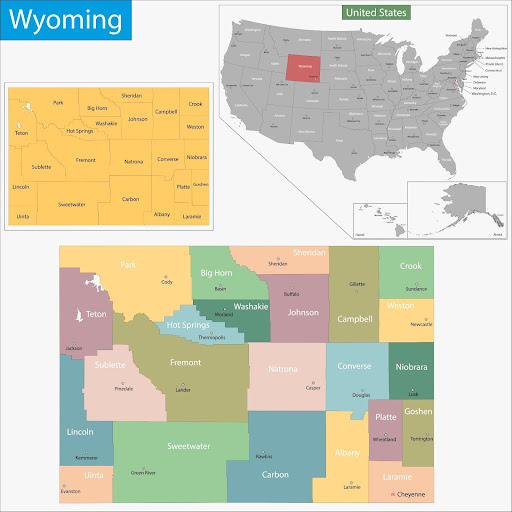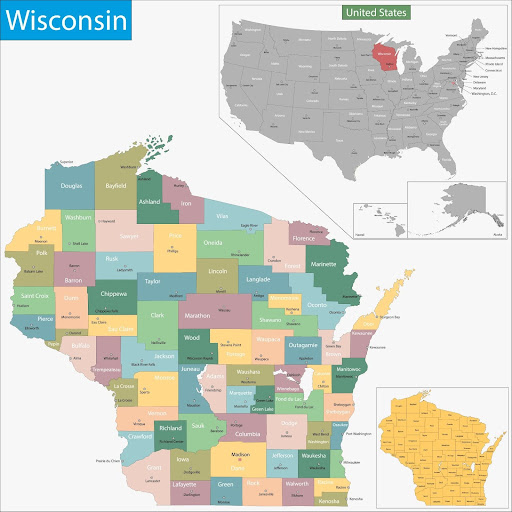Table of Contents
Indiana doesn’t scream "wildfire country" to most. But seasoned fire investigators know better. The Hoosier State sees its fair share of fast-moving grassfires, unpermitted burns gone rogue, and forested areas with lingering smolder potential. The challenge here isn’t mountainous terrain or sprawling wilderness; it’s fragmentation. Mixed land use, variable suppression readiness, and overlapping agency jurisdictions can complicate an investigation quickly.
This guide breaks down wildland fire resources in Indiana through a practical lens: which agencies to know, what seasons bring the most ignition risk, where to get trained, and how to stay updated as fire conditions shift across the state.
Get a full picture on our wildland firefighting resources section.
Live Incident Updates & Maps
Track wildfire activity and smoke dispersion in Indiana using this live tool:
State Overview
Indiana is defined by transition zones. The southern third is hilly and heavily forested, with the Hoosier National Forest creating a distinct ignition-prone corridor. The north is flat, agricultural, and wind-swept, which is a setup for fast-burning grassfires.
- Northern Indiana: Agricultural lands with combustible crop residue and high-risk machinery ignition.
- Central Indiana: Expanding suburbs and WUI zones make for complicated cause determinations, especially when recreational fires cross into unmanaged land.
- Southern Indiana: Forest fuels, rugged access, and absentee property ownership increase ignition time-to-detection.
Expect local topography and land management practices to heavily influence each fire’s behavior and investigation complexity.
Wildfire Season Timeline
Wildland fire activity in Indiana spikes during three predictable windows:
- Spring (March–May): Peak fire season. Dormant vegetation, gusty winds, and burn piles combine for most annual ignitions.
- Late Summer (August): Drought-impacted fuels and recreational activity contribute to fire starts in forested and WUI areas.
- Fall (October–November): A second surge as leaf litter cures and illegal burns or debris fires escape control.
Winter and early summer tend to have lower wildfire incidence, but equipment-related sparks during harvest (Oct–Nov) can still pose a risk.
Key State Agencies Involved
- Indiana Department of Natural Resources (IDNR): The primary wildland fire response agency on state lands. Coordinates suppression and investigation within state forests and the Hoosier National Forest in partnership with federal agencies.
- Indiana Department of Homeland Security (IDHS): Hosts the Division of Fire Investigations and oversees statewide fire incident coordination. Offers investigation resources and supports training across jurisdictions.
- U.S. Forest Service: Responsible for wildland fires on federal lands in southern Indiana. Follows NWCG and LEI standards for investigation and suppression.
- National Weather Service (NWS): Issues fire weather watches and red flag warnings that influence burn bans and suppression prep.
Local Wildland Firefighting Resources
Local resources form the backbone of Indiana’s initial attack structure. Here’s a list of helpful local resources you should know about.
List of Local/State/Federal Fire Response Agencies
Contact Numbers and Emergency Links
- To Report a Wildfire: Dial 911
- IDNR Division of Forestry: (317) 232-4105 | dnr.in.gov
- IDHS Division of Fire Investigations: (317) 232-2222 | in.gov/dhs
- Hoosier National Forest Fire Dispatch (USFS): (812) 275-5987 | fs.usda.gov
Training & Volunteering
Indiana’s wildfire training ecosystem is anchored by DNR, which provides NWCG-aligned instruction to both state personnel and local volunteers.
NWCG-Approved Academies and Centers
Volunteer and Seasonal Training Opportunities
- DNR Wildland Fire Crew Program: Recruits and trains volunteers and part-time firefighters for seasonal operations. Many go on to complete red card certification.
- Prescribed Fire Volunteer Corps: Run through local land trusts and conservation districts. Volunteers assist with ignition prep, mop-up, and weather monitoring.
- College-Based Fire Programs: Ivy Tech and Vincennes University offer wildland tracks within public safety and forestry curricula.
Stay Informed on Indiana’s Wildland Fire Landscape
Fire behavior in Indiana is subtle, until it’s not. Investigators need to stay sharp on how quickly fire conditions can change. A mild spring morning can turn dangerous by mid-afternoon when humidity drops and wind gusts increase. Add in inconsistent landowner burn practices and outdated equipment, and small fires can become multi-agency events fast.
Stay current with:
- County burn bans and weather alerts
- Local forest preserve policies on burns and recreational fire use
- Training updates from IDHS and IDNR
- NWCG bulletins relevant to Region 9
Knowledge here is less about terrain and more about people, patterns, and preparation. Know who to call, what the fuels are doing, and when to step in.
FAQs
How do I report a wildfire in Indiana?
Dial 911. Be ready with cross streets, landmarks, or GPS coordinates.
Who investigates wildfires in Indiana?
It depends on jurisdiction. IDNR investigates fires on state lands. Local fire marshals or departments typically lead on private property. USFS leads on federal land.
Are burn permits required in Indiana?
In many counties, yes, especially during spring and fall fire seasons. Always check local ordinances and weather restrictions.
Can volunteers become certified wildland firefighters in Indiana?
Yes. IDNR and IFA offer red card training and seasonal crew opportunities for qualified applicants.










